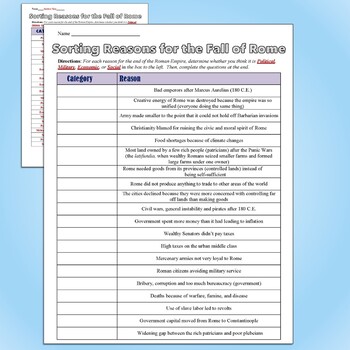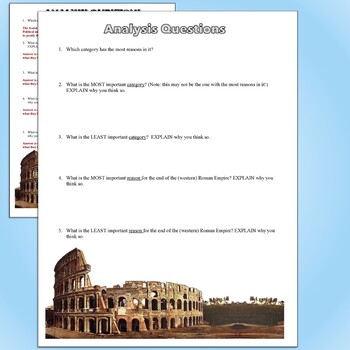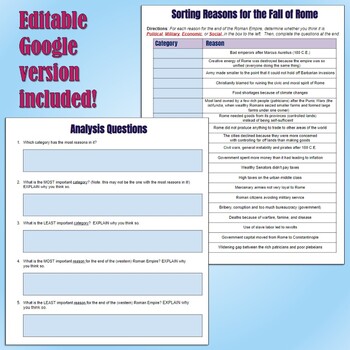Reasons for the Fall of the Roman Empire Sorting Activity
- PDF
What educators are saying
Description
This is a great Ancient Rome cooperative learning or individual activity in which students analyze 20 reasons for the Fall of the Roman Empire and match them to the category that best describes it (Social, Political, Economic, or Military).
After classifying each reason for Rome's decline, students analyze their results to determine what had the biggest and smallest impact on Rome's ultimate collapse. I like to have my students work together on this so that they can argue and defend their choices as each is open to interpretation.
An editable Google Docs version is included with the download along with an answer key for your convenience.
This resource can also be downloaded as part of the larger, Ancient Rome Unit Bundle!
Thanks for looking!
Please "Like" my page on Facebook for updates, giveaways, links and more! Thanks!





